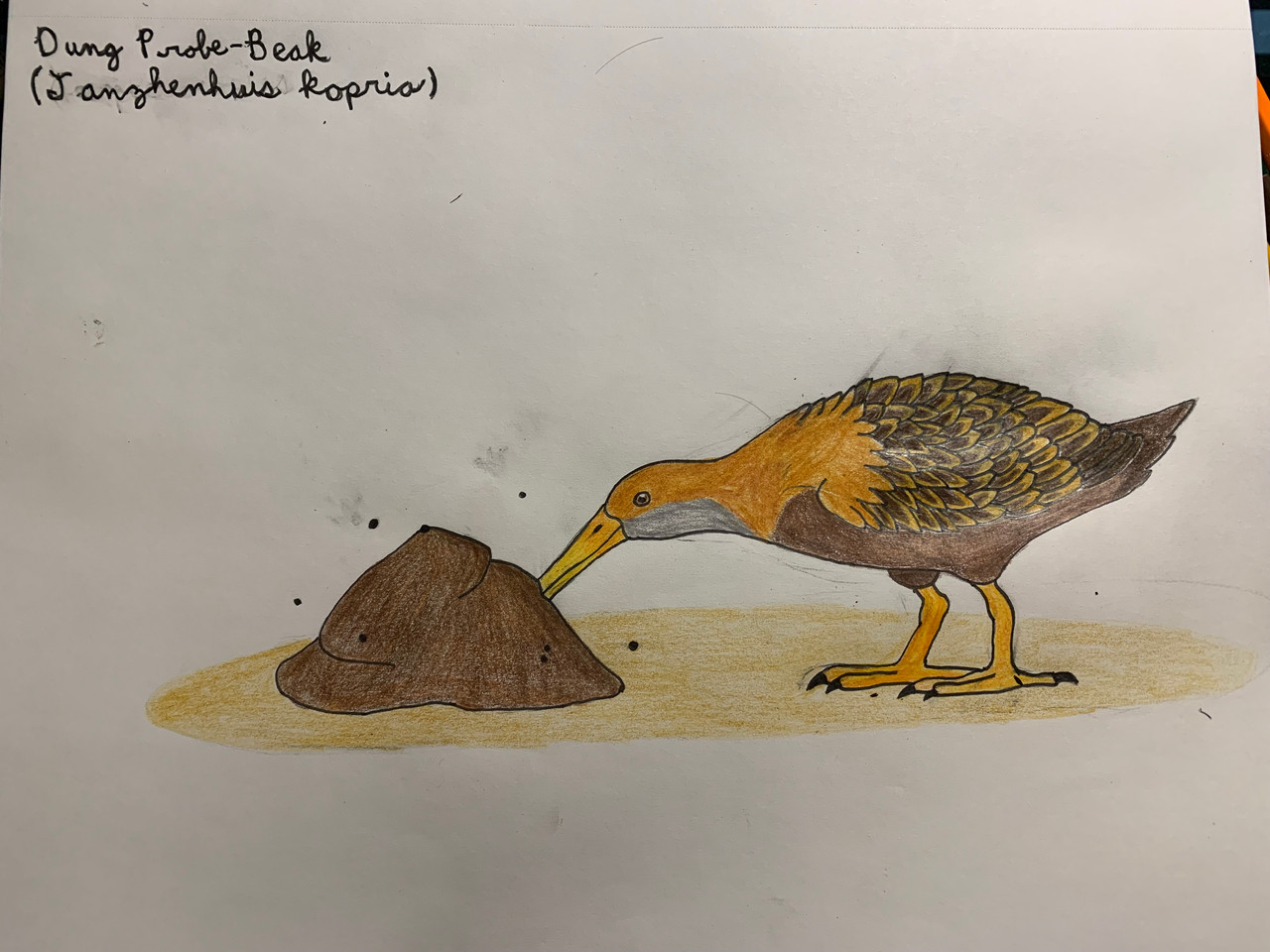HOME | DD
 ScreenSamurai — Dung Probe-Beak
ScreenSamurai — Dung Probe-Beak

#asia #beak #bird #crake #desert #dung #insectivore #probe #rail #taiyang #railbird #futureevolution #speculativeevolution #speculativebiology #speculativezoology
Published: 2022-03-06 09:37:13 +0000 UTC; Views: 6068; Favourites: 52; Downloads: 2
Redirect to original
Description
Common Name: Dung Probe-BeakScientific Name: Tanghenhuis kopria
Length: 30 to 50 centimeters from beak to tail
Weight: 145 to 175 grams
Diet: Flies, beetles, insect larva, other arthropods, seeds, and plant matter
Distribution: The dry grasslands and open desert of the Taiyang Desert
Lifespan: 5 to 7 years
Description: Animal dung is a vital resource for many organisms, microscopic and giants. Plants use dung to fertilize themselves, spread seeds through the process of seed dispersal, and other reasons. The feces will erode into the ground and provide more nutrients to other plants. Some parasites use dung to transport their young to other animals. They also work as micro-environments for bacteria, fungi, microorganisms, etc. Other animals, such as dung beetles and flies, laid their eggs in other animals’ feces. In the Novicene, one rail species evolved to feast on these insects. This specialized bird is known as the dung probe-beak. This group is known as the probe-beaks because they have a beak used to find food in tight places. Some probe-beaks evolved to feed off burrowing ants. Others live in temperate forests and feed on grubs, caterpillars, and beetles.
The dung probe-beak is an odd member of the probe-beaks since it has a strange relationship with feces. Like most rails, they are relatively weak fliers, so they usually stay near other animals. This bird feeds out insects, like most members of the probe-beaks. However, they eat the dung beetles and flies that feed off feces. They use their beaks to probe in feces to find grubs and other insects. They don’t exclusively eat dung-feasting insects, but these insects make up a large proportion of their diet. However, they have to wash their beaks after a week of feeding. The probe-beaks use water sources to clean their beaks off the parasites and bacteria. These birds also have a high tolerance for diseases and parasites. They first get their high tolerance from their parents’ regurgitated insects. This tolerance also means that parasites fill the body, making them dangerous to eat without cooking. The sapient wandering macaques that inhabit this area figured out that these birds are toxic.
Speaking of the wandering macaques, a giant population of dung probe-beaks lives in the city-states of these macaques. They feed off the flies and dung beetles that congregate around the macaques’ sewage and fecal matter. These birds lost their fear of macaques and humans over the years due to living in the same area. This inhabitation of cities and fearless through sapient primates have given them a reputation of being disease-ridden vermin. The attitude is similar to what people view pigeons as. Expect, they are seen as even more disgusting because they go through poop and sewage. Although, they help keep down the insect population to let the macaques live a comfortable life. If this species didn’t exist, insects would invade the towns, making life a living hell.
Related content
Comments: 2

👍: 2 ⏩: 1

👍: 0 ⏩: 0
























